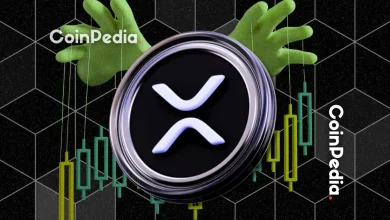
Garlinghouse sees Ripple's entry into the stablecoin market as key for future growth.
Ripple's RLUSD stablecoin, tied to the U.S. dollar, awaits final regulatory approval.
Ripple faces major regulatory challenges in the U.S., including ongoing SEC legal battles.
Ripple’s CEO, Brad Garlinghouse, has provided new insights for the XRP community, offering a mix of both optimism and caution. In a recent interview, he shared promising developments around the launch of Ripple’s RLUSD stablecoin, as well as regulatory hurdles the company continues to face, particularly in the United States.
Ripple’s RLUSD Stablecoin Is Almost Here
Ripple is getting ready to launch its new stablecoin, RLUSD, which will be tied to the U.S. dollar. In a recent interview, Garlinghouse confirmed that the stablecoin should launch soon, pending final approval from U.S. regulators. While Ripple is starting the launch in the U.S., the company is also looking at opportunities in other countries like Japan, where the regulations are more supportive of crypto.
Garlinghouse explained that the stablecoin is part of Ripple’s strategy to tap into the growing demand for stablecoins worldwide. He believes that RLUSD will be a valuable addition to Ripple’s offerings and help expand its presence in the global market.
Why Ripple Is Entering the Stablecoin Market
Though XRP has long been Ripple’s cornerstone for cross-border payments, the decision to enter the stablecoin market marks a strategic expansion for the company. Garlinghouse pointed out that the stablecoin market is expected to grow significantly in the next few years, potentially reaching trillions of dollars.
By entering this market, Ripple aims to meet increasing demand and strengthen its position in the financial sector. Ripple’s move into stablecoins reflects its desire to stay at the forefront of the evolving crypto landscape and to offer more options to its customers.
Ripple’s Success in Japan
Garlinghouse highlighted Ripple’s successful partnerships, especially in Japan. Since 2016, Ripple has worked closely with SBI Group, a major financial company in Japan. Meanwhile, these partnerships have helped Ripple increase the use of XRP in Japan.
Garlinghouse praised Japan for its forward-thinking approach to cryptocurrency, contrasting it with the slower progress in the U.S. He believes that Japan’s supportive stance on crypto can drive innovation and provide Ripple with new opportunities.
Challenges in the U.S. Crypto Market
However, Garlinghouse did not shy away from addressing the regulatory challenges Ripple faces in its home market. He criticized the U.S. government’s approach to crypto regulation, calling it hostile and outdated.
In particular, he highlighted the ongoing legal battle with the U.S. Securities and Exchange Commission (SEC), which has created significant uncertainty for the industry as a whole.
Despite these challenges, Garlinghouse remains committed to making crypto a bipartisan issue. He urged regulators and politicians to view blockchain technology objectively, without being swung by party politics. This balanced view, he hopes, will help foster a more favorable environment for crypto innovation in the U.S. in the future.
Read Also: Nigeria SEC Crypto Crackdown: Unregulated Exchanges Under Fire!







